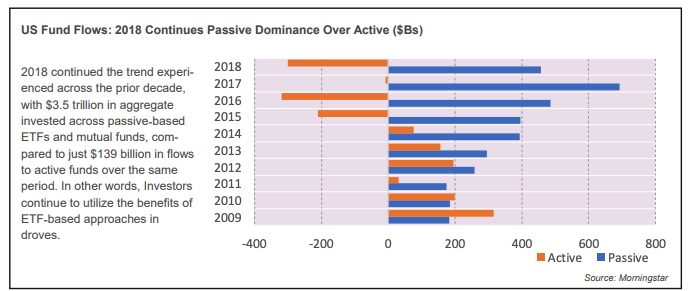In our latest installment of From the Desk of the CIO: Unleashing Asset Allocation Benefits, Mike Parker explains how the tools that were formerly reserved for large institutions can now be accessed by individual investors. This piece—available here to download—acts as a companion to a broad allocation change that we have made to our Multi-Asset Income (MAI) strategy, effective as of March 1st for existing clients.
Here is an excerpt:
The first step to asset allocation design is categorizing the opportunity set of an investable universe. The core variable here is the universal feature behind every security: the cash flow that it either generates or expects to generate. In newly issued equities, the presence of sustainable cash flow may indeed be years away. However, investors invariably attempt to factor all potential variables impacting the path to profitability into their assessment of that security’s present value. In fixed income, the exercise is no different, but the nature of a face value repayment, regular coupon payments, and capital structure nuances—to name a few—carry different implications on the security owner’s return variability. Hence, a fixed income security’s price volatility reacts differently than cash flow streams accruing to the equity holder. These differences are typically what drive higher percentages of fixed income-based allocations, all else equal, for investors skewing to the more conservative end of the risk/reward spectrum.
 Even within equities, cash flow variability can be derived from differences pertaining to the sector, geographic exposure, market capitalization, or go-to-market actions of a given company. For example, the pace of innovation, and the incessant need to translate it into products and services is fastest within the technology sector. The core driver to this cadence is humanity’s insatiable computing needs, where we attempt to squeeze smaller and smaller features onto silicon wafers with every passing day. Place the wrong bets on the wrong set of features, and you’ll find yourself suffering the fate of the Palm Pilot, a product that was forced into capitulation by the iPhone. The business of competing within technology runs at a faster rate than that of a beer distributor or cigarette producer, for instance. The latter companies face the task of attempting to appeal to demographic demand shifts toward craft beer and e-cigarettes, respectively, along with preparations for when/if cannabis becomes legalized within the US.
Even within equities, cash flow variability can be derived from differences pertaining to the sector, geographic exposure, market capitalization, or go-to-market actions of a given company. For example, the pace of innovation, and the incessant need to translate it into products and services is fastest within the technology sector. The core driver to this cadence is humanity’s insatiable computing needs, where we attempt to squeeze smaller and smaller features onto silicon wafers with every passing day. Place the wrong bets on the wrong set of features, and you’ll find yourself suffering the fate of the Palm Pilot, a product that was forced into capitulation by the iPhone. The business of competing within technology runs at a faster rate than that of a beer distributor or cigarette producer, for instance. The latter companies face the task of attempting to appeal to demographic demand shifts toward craft beer and e-cigarettes, respectively, along with preparations for when/if cannabis becomes legalized within the US.
Sector differences aside, resource scarcity can vary greatly among companies of differing sizes, which ultimately impacts cash flow variability, as the resources available to a $100 billion+ market capitalization company are vastly different than a $1 billion company. Generally speaking, a smaller company has to make smaller, concentrated bets with much less room for error. Even though tools at the disposal of the startup today are vastly superior to those from a decade ago—enabled by the likes of Amazon Web Services and Google Cloud Platform—an issuer’s market capitalization undoubtedly has an impact upon its cash flow variability. . .
Download the rest of the whitepaper by clicking here.